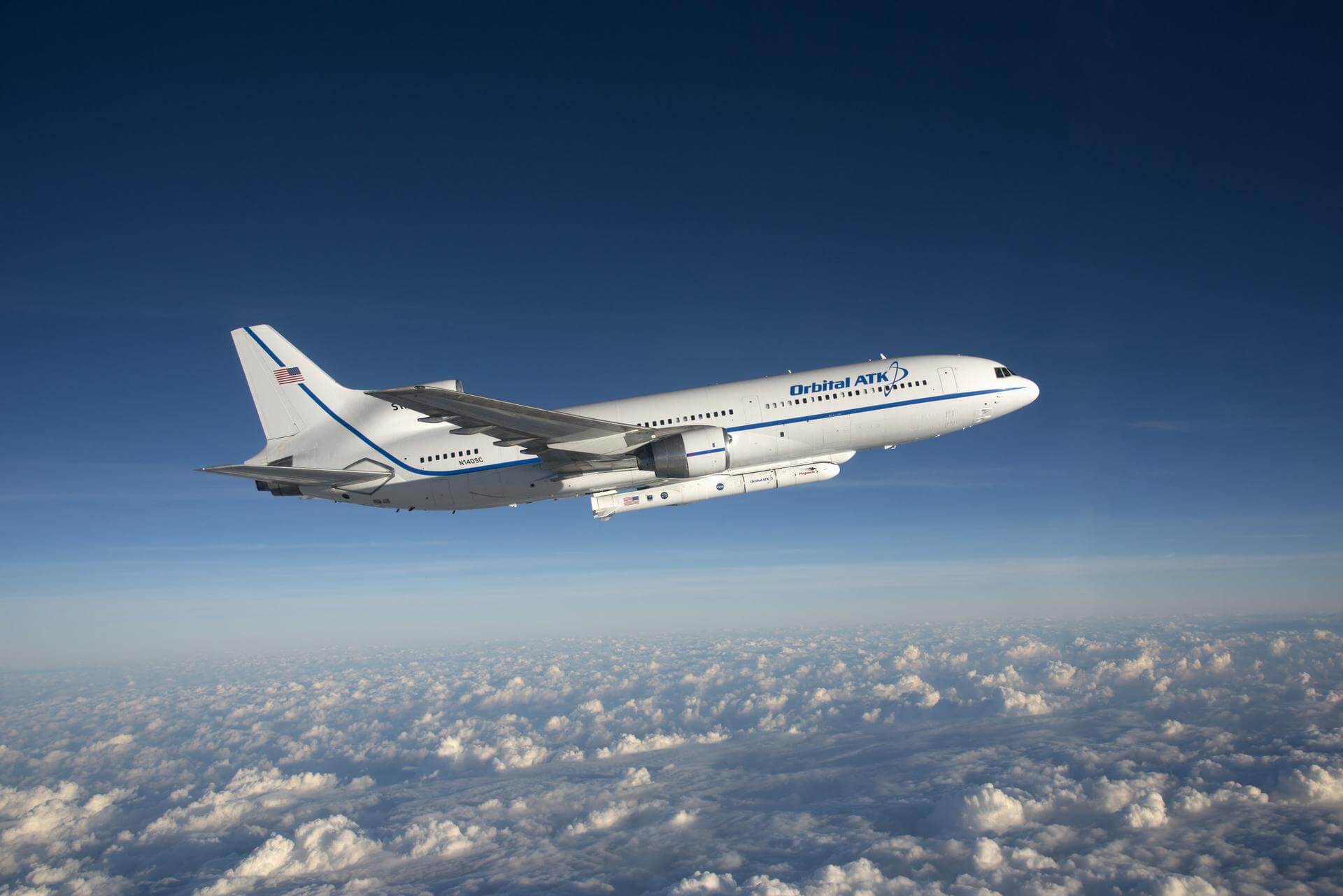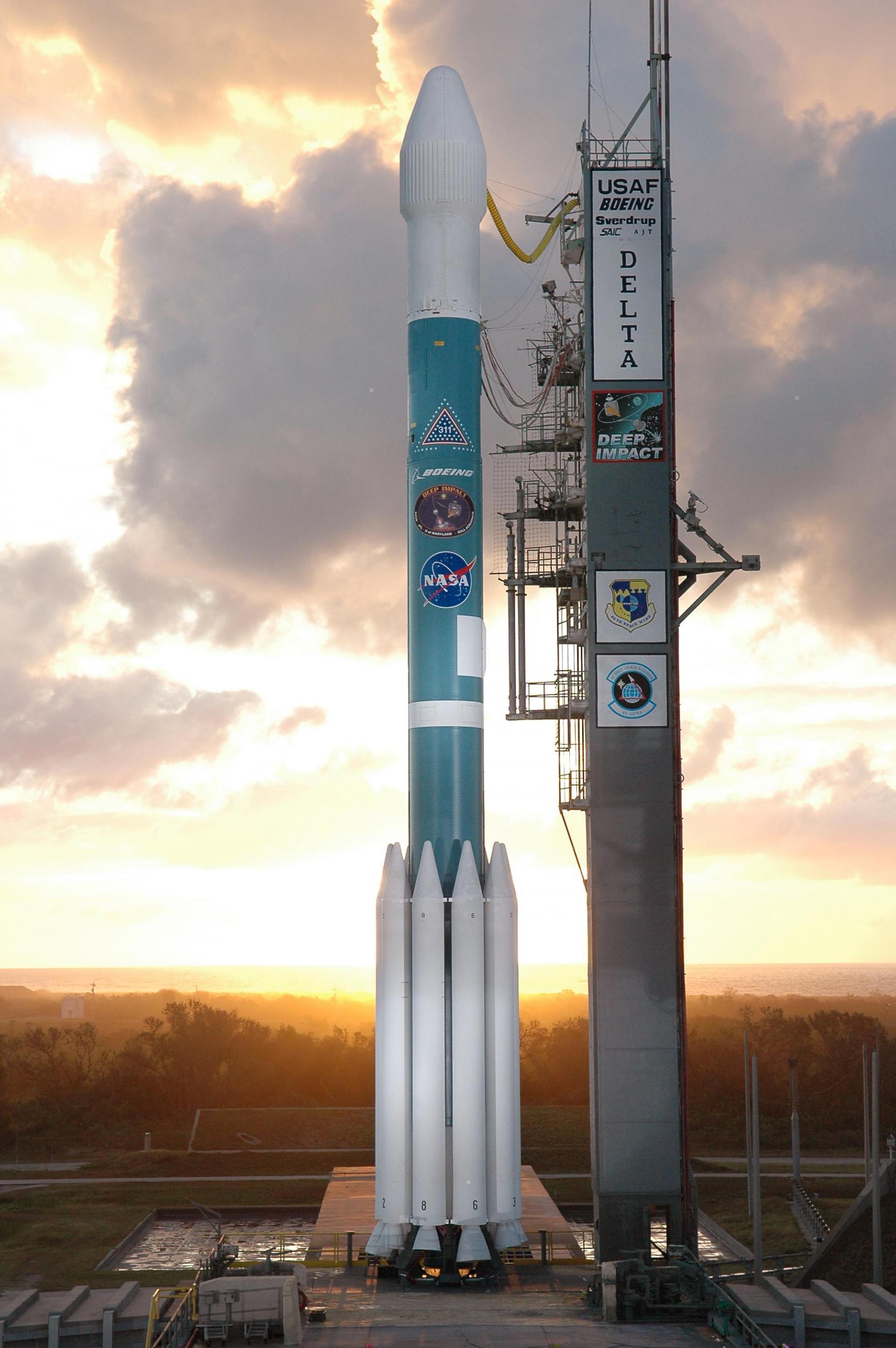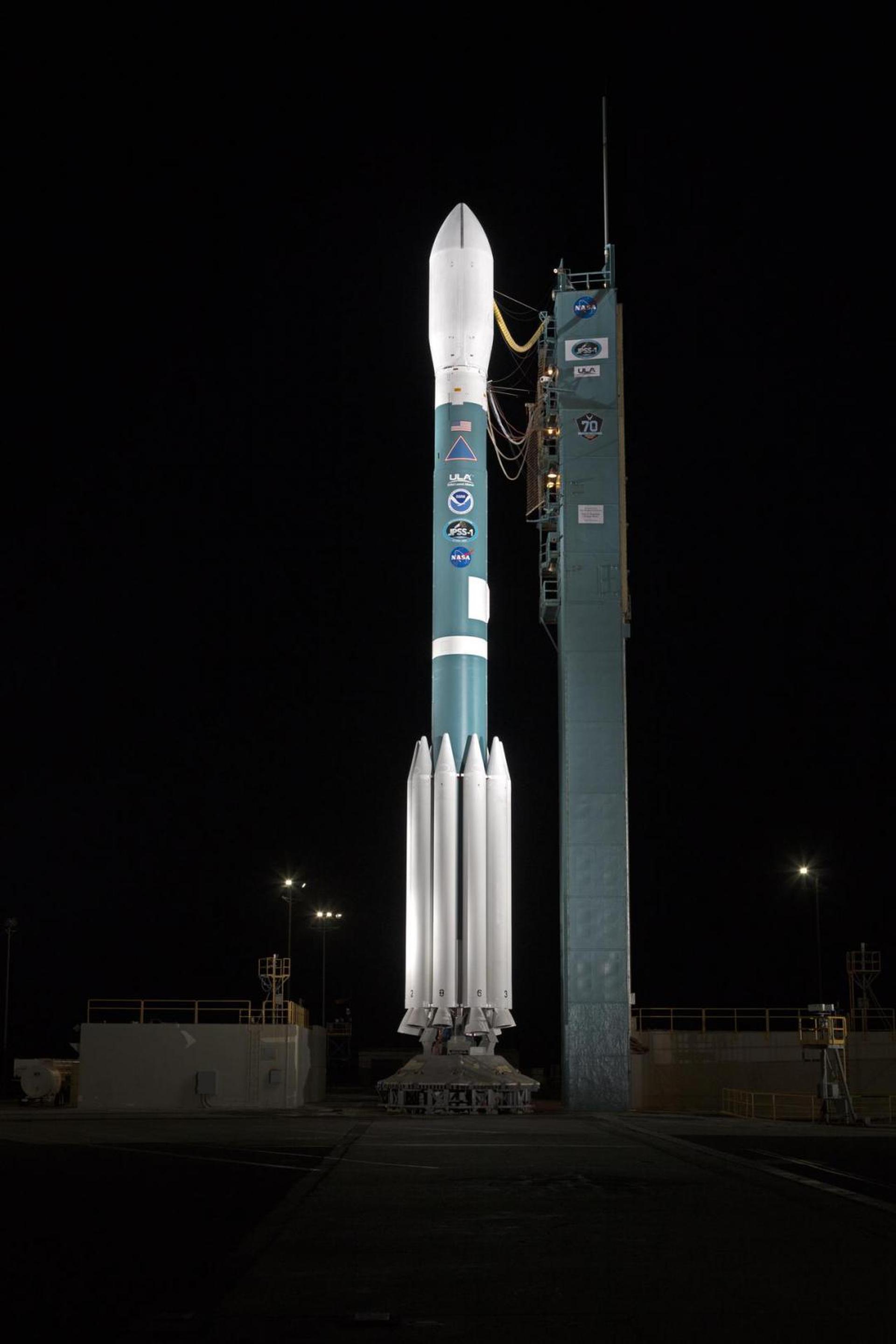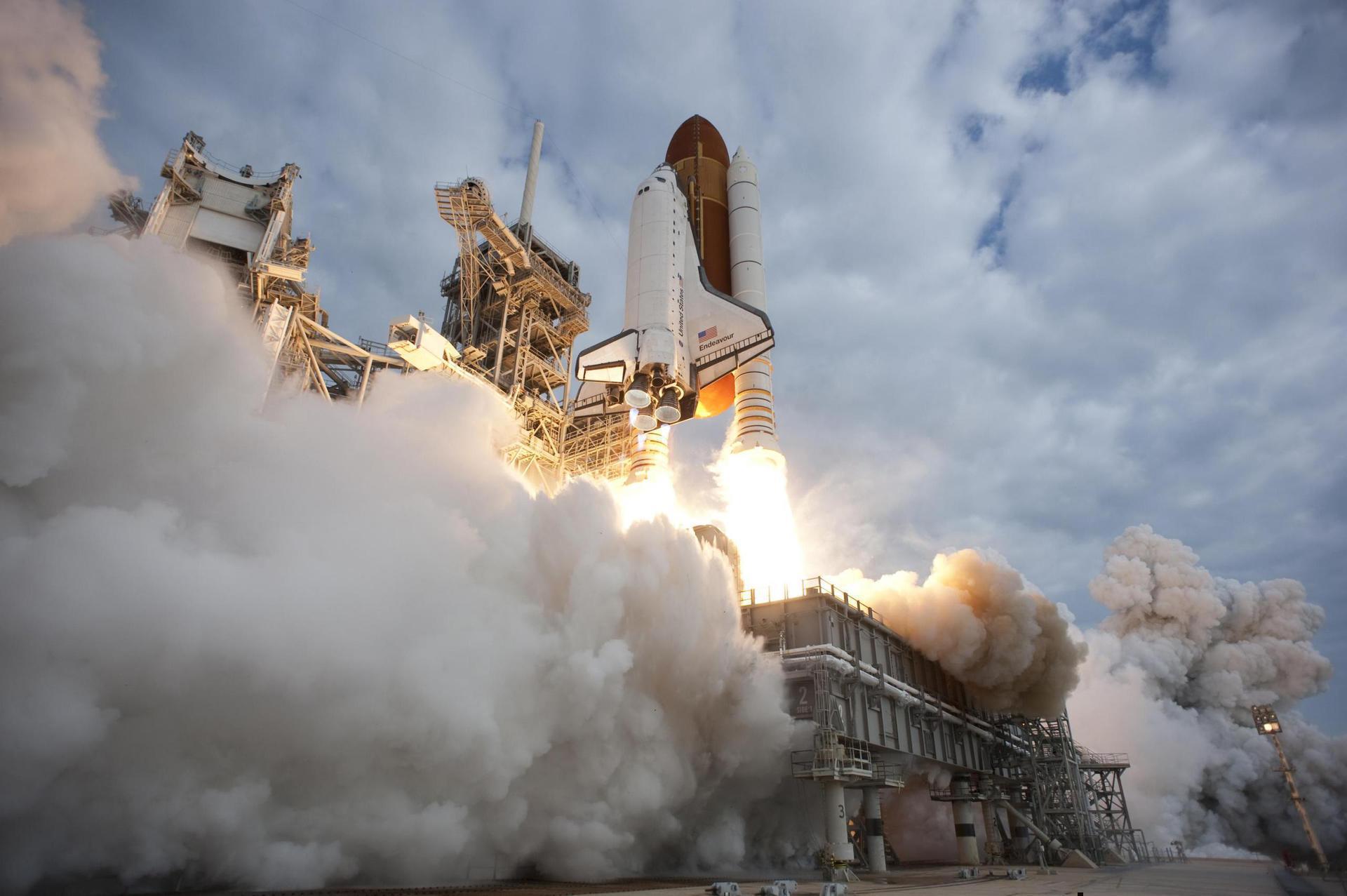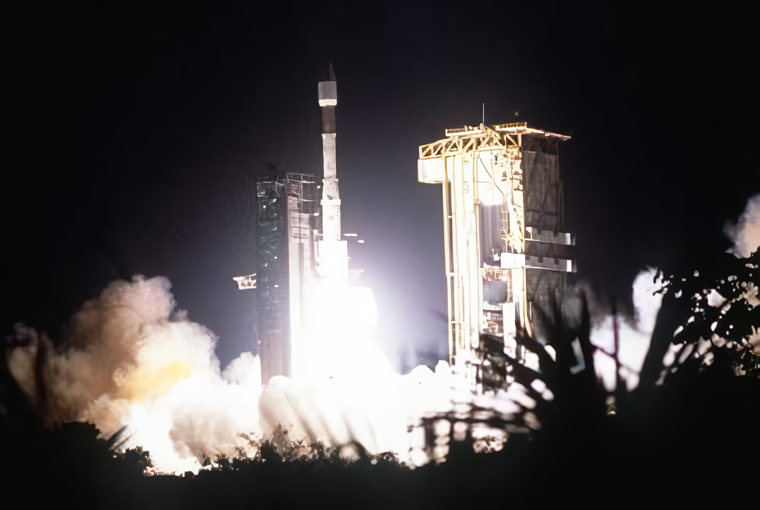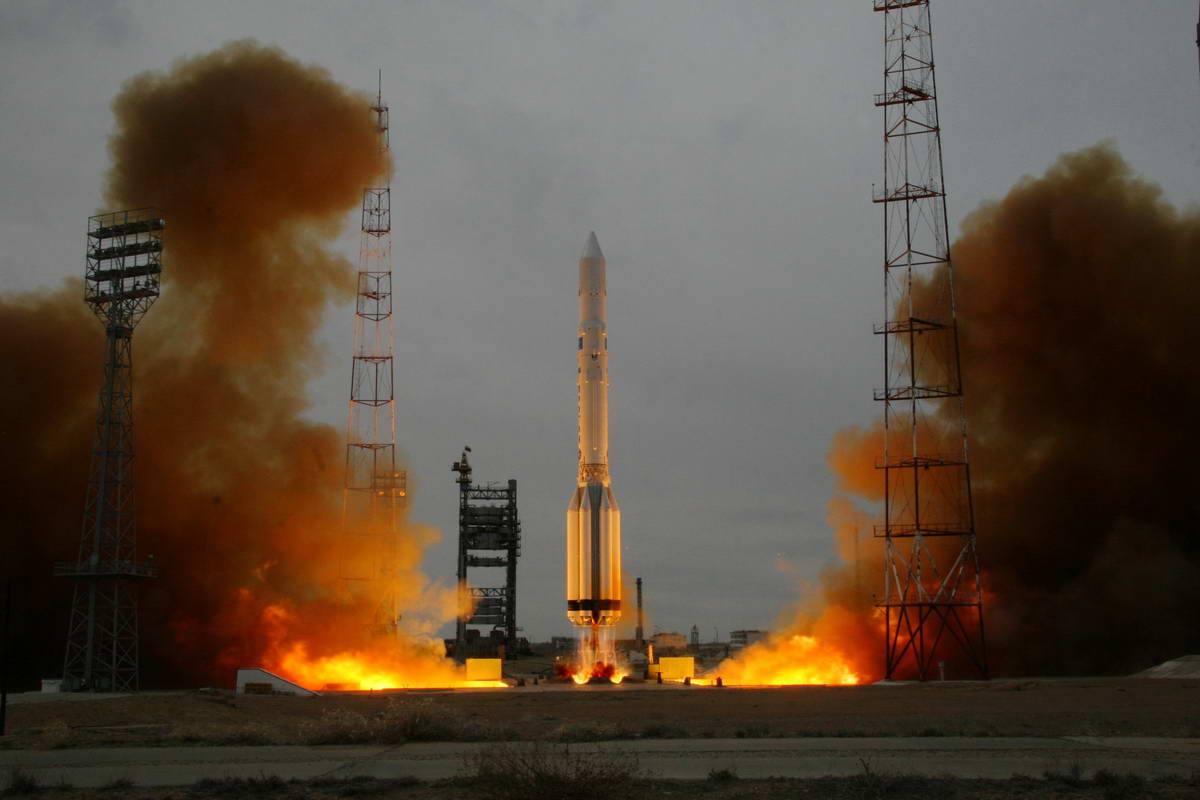Previous Spaceflight Launches
Filter by Agency, Locations or Vehicles
Show All LaunchesSoyuz-U | Soyuz TM-26
Russian Federal Space Agency (ROSCOSMOS) | RussiaBaikonur Cosmodrome, Republic of Kazakhstan
Aug. 5, 1997, 3:35 p.m.
Status: Launch Successful
Mission:
Soyuz TM-26 was the 32nd mission and the 24rd long-duration expedition to Mir space station. It was also a part of the US/Russian Shuttle-Mir Program. The mission began on August 5, 1997, 15:35:54 UTC, launching Commander Anatoly Solovyev and Flight Engineer Pavel Vinogradov into orbit. They docked with Mir two days later. During their stay there, cosmonauts performed several EVAs and various scientific experiments in medicine, biotechnology, Earth sciences etc. Station crew was visited by several Progress resupply spacecrafts, STS-86 and STS-89, and welcomed aboard Soyuz TM-27 with the next expedition crew. The mission concluded with a safe landing back on Earth on February 19, 1998, 09:10:30 UTC.
Low Earth OrbitPegasus XL | OrbView-2
Orbital Sciences Corporation | United States of AmericaAir launch to orbit
Aug. 1, 1997, 8:20 p.m.
Atlas IIAS | Superbird 3
Lockheed Martin | United States of AmericaCape Canaveral, FL, USA
July 28, 1997, 1:15 a.m.
Delta II | GPS IIR-2
United Launch Alliance | United States of AmericaCape Canaveral, FL, USA
July 23, 1997, 3:43 a.m.
Delta II | Iridium 15
United Launch Alliance | United States of AmericaVandenberg SFB, CA, USA
July 9, 1997, 1:04 p.m.
Status: Launch Successful
Mission:
Iridium provides global mobile telecommunications services using a constellation of 66 low earth orbit satellites in a 86.4° inclined orbit. Although 77 satellites were originally envisioned for the system and spawned the name based on the 77th element in the periodic table, the system has been scaled back. Motorola's Satellite Communications Group designed and manufactured the Iridium satellites with Lockheed Martin providing the LM-700A spacecraft buses.
Low Earth OrbitSoyuz U | Progress M-35
Russian Federal Space Agency (ROSCOSMOS) | RussiaBaikonur Cosmodrome, Republic of Kazakhstan
July 5, 1997, 4:11 a.m.
Space Shuttle Columbia / OV-102 | STS-94
National Aeronautics and Space Administration | United States of AmericaKennedy Space Center, FL, USA
July 1, 1997, 6:02 p.m.
Ariane 44P | INTELSAT 802
Aérospatiale | FranceGuiana Space Centre, French Guiana
June 25, 1997, 11:44 p.m.
Status: Launch Successful
Mission:
The Intelsat VIII-VIII/A series has been designed to meet the needs of Intelsat users throughout the system for improved C-band coverage and service. These spacecraft will incorporate six-fold C-band frequency reuse, two-fold frequency reuse of expanded C-band capacity, and the highest C-band power level ever for an Intelsat satellite. Consequently, Intelsat VIII will provide significantly more C-band capacity for public switched telephony and Intelsat Business Service, better quality for video services, and encourage new international VSAT applications.
Geostationary OrbitProton-K/17S40 | Iridium 09 to 14 & Iridium 16
Khrunichev State Research and Production Space Center | RussiaBaikonur Cosmodrome, Republic of Kazakhstan
June 18, 1997, 2:02 p.m.
Status: Launch Successful
Mission:
Iridium provides global mobile telecommunications services using a constellation of 66 low earth orbit satellites in a 86.4° inclined orbit. Although 77 satellites were originally envisioned for the system and spawned the name based on the 77th element in the periodic table, the system has been scaled back. Motorola's Satellite Communications Group designed and manufactured the Iridium satellites with Lockheed Martin providing the LM-700A spacecraft buses.
Low Earth OrbitLong March 3 | Feng Yun 2A
China Aerospace Science and Technology Corporation | ChinaXichang Satellite Launch Center, People's Republic of China
June 10, 1997, 12:01 p.m.

